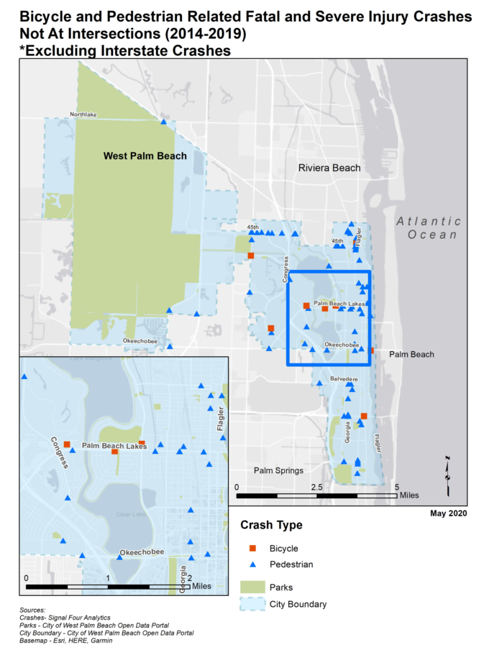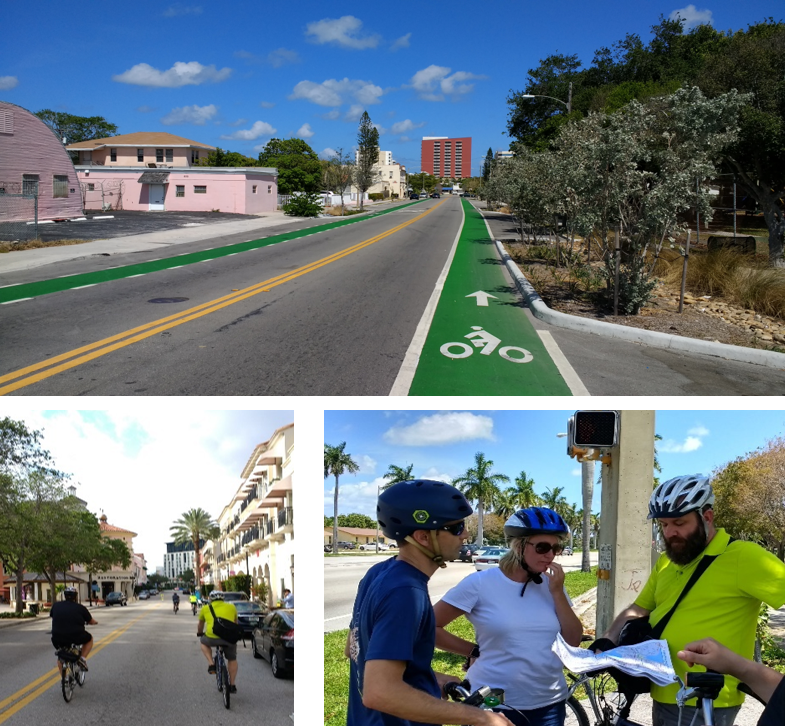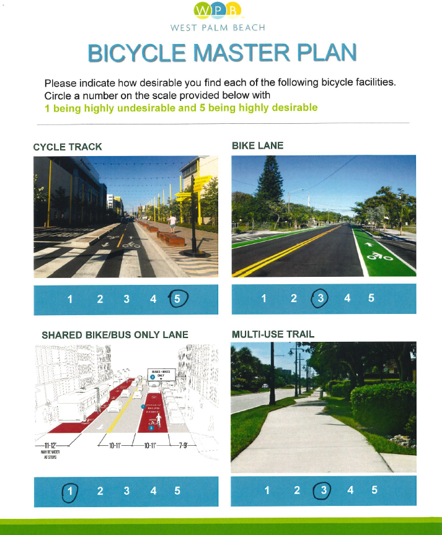First, it is a part of the City's comprehensive plan...
-
Comprehensive Plan - Element 3 - Transportation
-
Objective 2.4.4: The City shall promote the increased use of bicycle and pedestrian facilities as a viable alternate means of transportation to the automobile.
-
Policy 2.4.4(a): The City shall adopt a pedestrian and bicycle master plan and complete the major system. The Master Plan shall include types, locations and details of existing and proposed bicycle and pedestrian facilities.
-
Policy 2.4.4(b):The City shall provide or require bicycle and pedestrian ways for connecting residential areas to recreational areas, schools, shopping areas, and employment areas.
-
Policy 2.4.4(d): The City shall encourage children to walk or cycle to school by providing bicycle and pedestrian ways that connect residential areas with schools and create "safe routes to school".
Second, safety is always our focus...
 Nearly 30% of fatal or severe injury crashes involved a pedestrian or bicyclist; 20% of all pedestrian and bicyclist crashes result in a fatality or severe injury. Most crashes (23%) occur in the evening from 6:01 PM to 9:00 PM, this is true for all modes except motorcycles. These unfortunate statistics illustrate how important is is to find a solution to the problem as quickly as possible.
Nearly 30% of fatal or severe injury crashes involved a pedestrian or bicyclist; 20% of all pedestrian and bicyclist crashes result in a fatality or severe injury. Most crashes (23%) occur in the evening from 6:01 PM to 9:00 PM, this is true for all modes except motorcycles. These unfortunate statistics illustrate how important is is to find a solution to the problem as quickly as possible.
The vision of this master plan is to create a network of connected and convenient bicycle facilities where users of different travel modes can share the road safely. The goal of the project was to adopt techniques that satisfied the needs of safety and security.
In 2017, West Palm Beach initiated it's master plan of 100 mile of networked bike lanes.
First step was to perform field visits. The project team performed field visits to gather information on existing bicycle and transit facilities along the City roadways.

This field work included a comprehensive inventory of all bicycle facilities found within the city including signed or marked shared lanes, bike lanes, shoulders, and pathways. Additional field reviews were conducted by engineering personnel from the City and consultant company.

A comprehensive Public Engagement effort was made to learn what residents hoped to gain from the project.
-
Hosted 3 Public Meetings Charrettes
-
Mayor and Commission Work Session
-
Website
-
TV Interviews - English and Spanish
-
Palm Beach Post
-
Stakeholder Meetings
-
Downtown Mobility Study Charrette
-
Okeechobee Corridor Study Charrette
-
Adopted May 21, 2018 - Mobility Study
-
An updated Bicycle Master Plan is scheduled in the Fiscal Year 2023-2024 budget.
The City also used visual surveys in several languages to allow citizens to select their favorite look.

-
Visual surveys were distributed in both Spanish and English
-
Spanish speaking staff were available at public meetings
-
Residents can comment Citywide preferred network and type of facilities
-
Downtown Mobility Study and Okeechobee Corridor Study Charrettes
The results of the visual preference survey show a desire for bicycle facilities that limit exposure to motor vehicles. The most desired facilities include buffered bicycle lanes using either vegetation or a concrete separator, and cycle tracks which also utilize a physical separation from the travel lanes.
Bike Master Plan Tier Projects